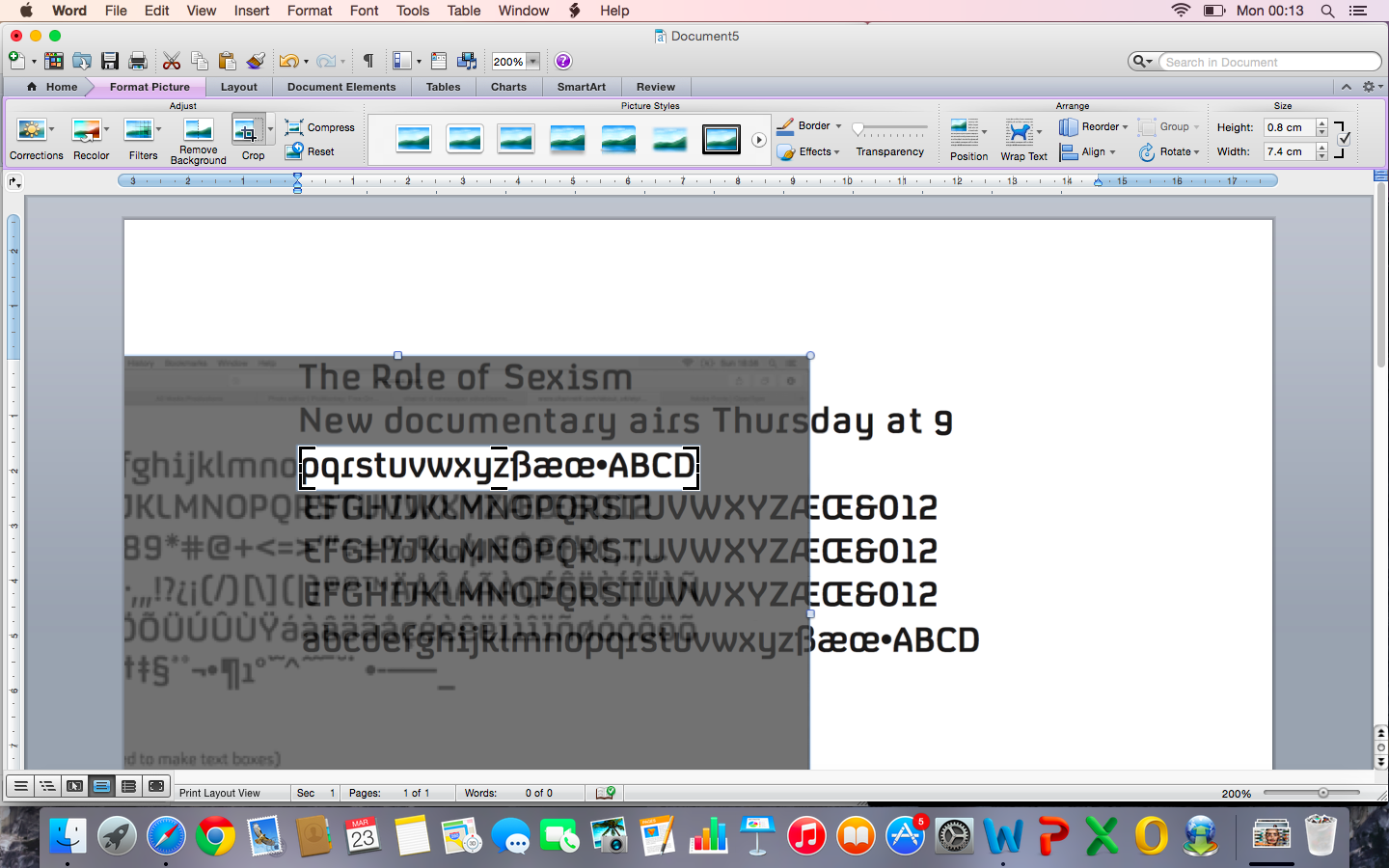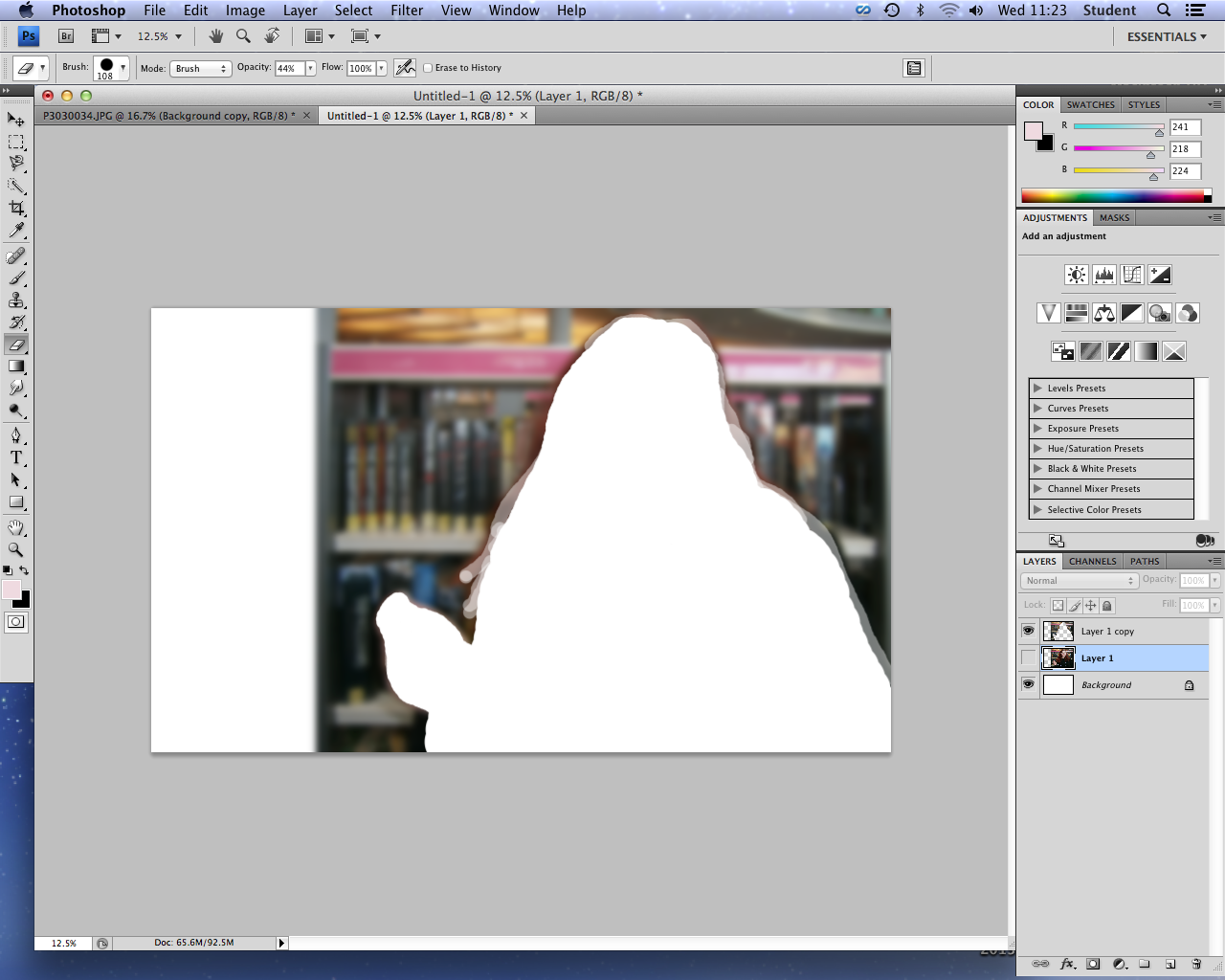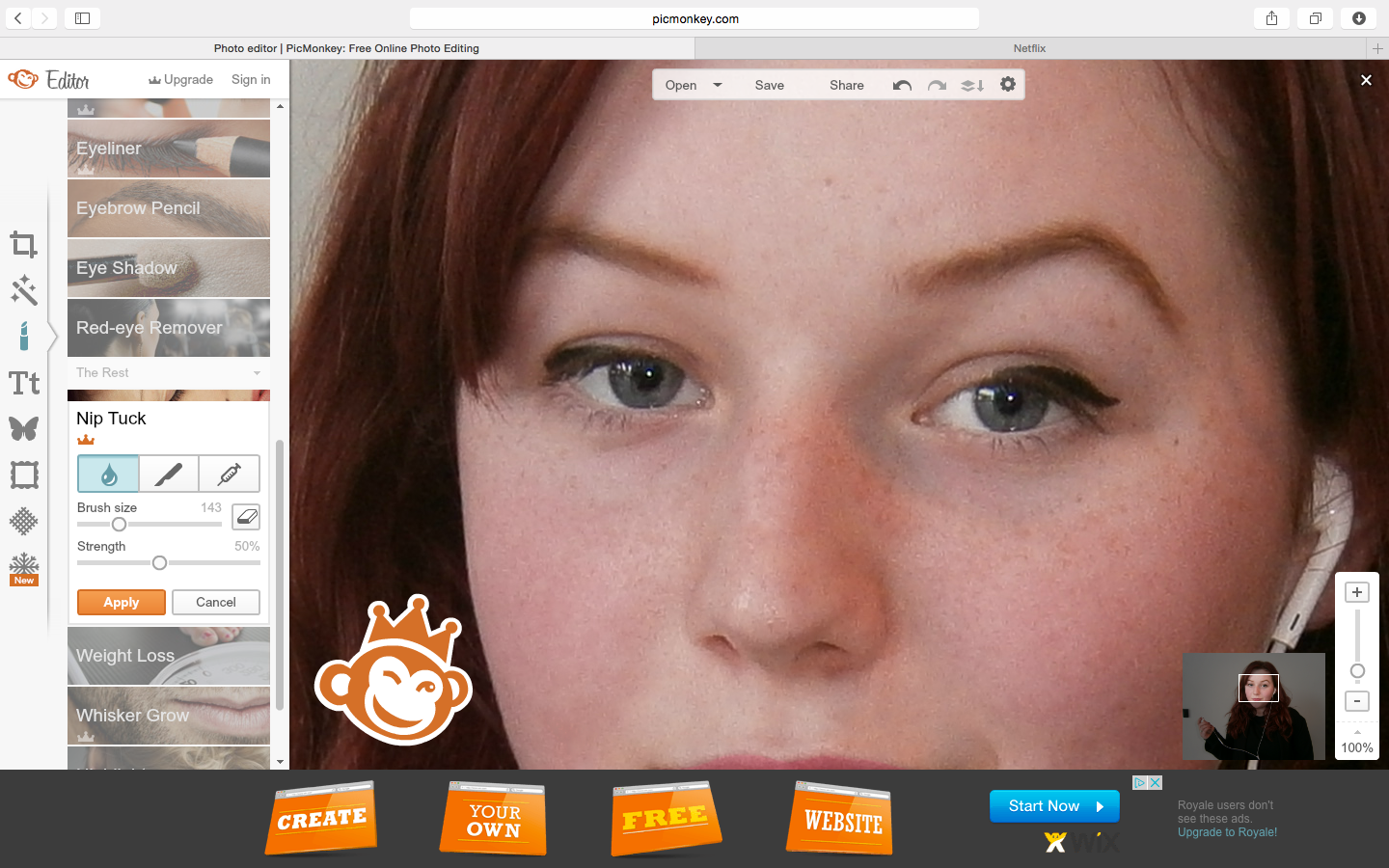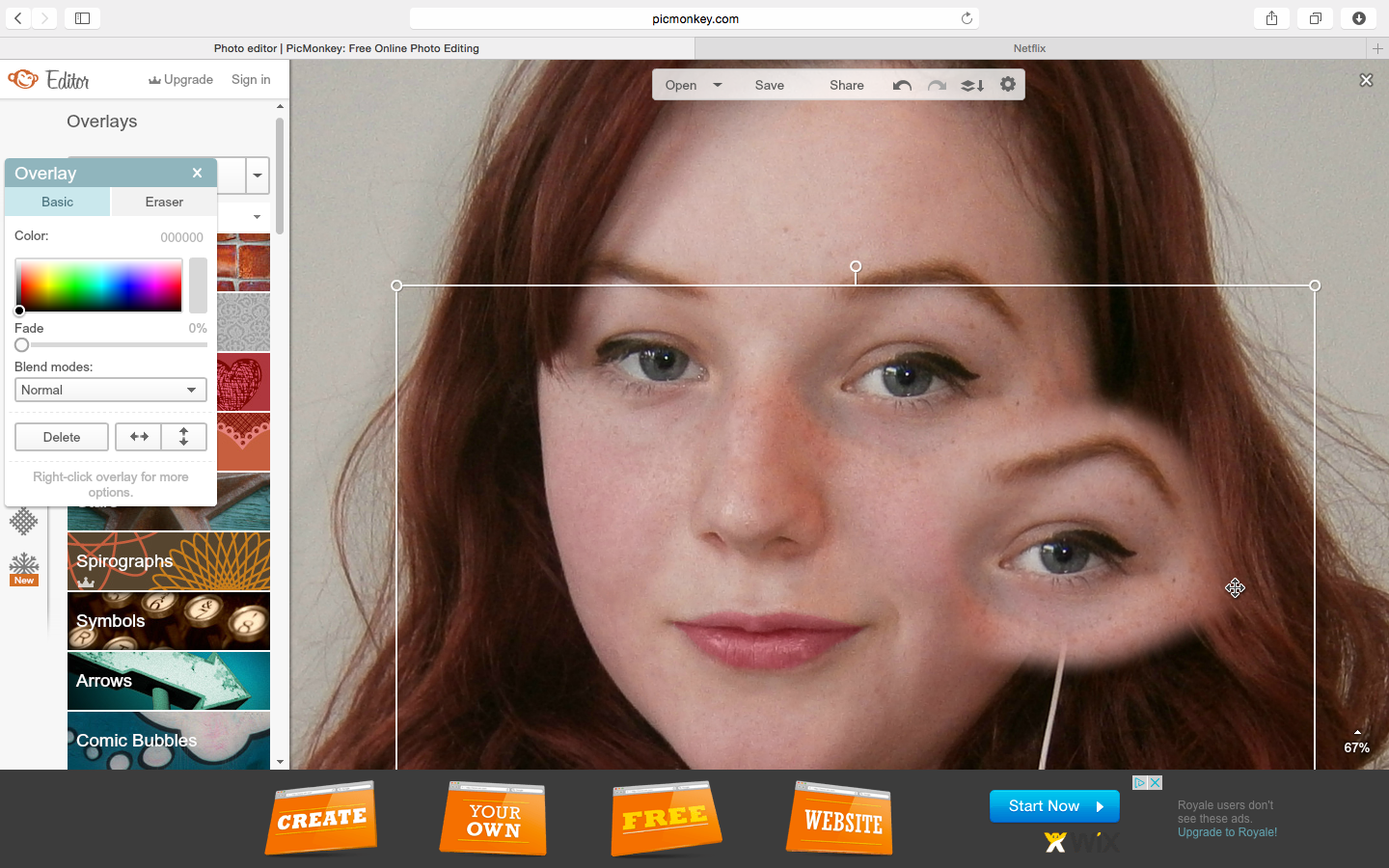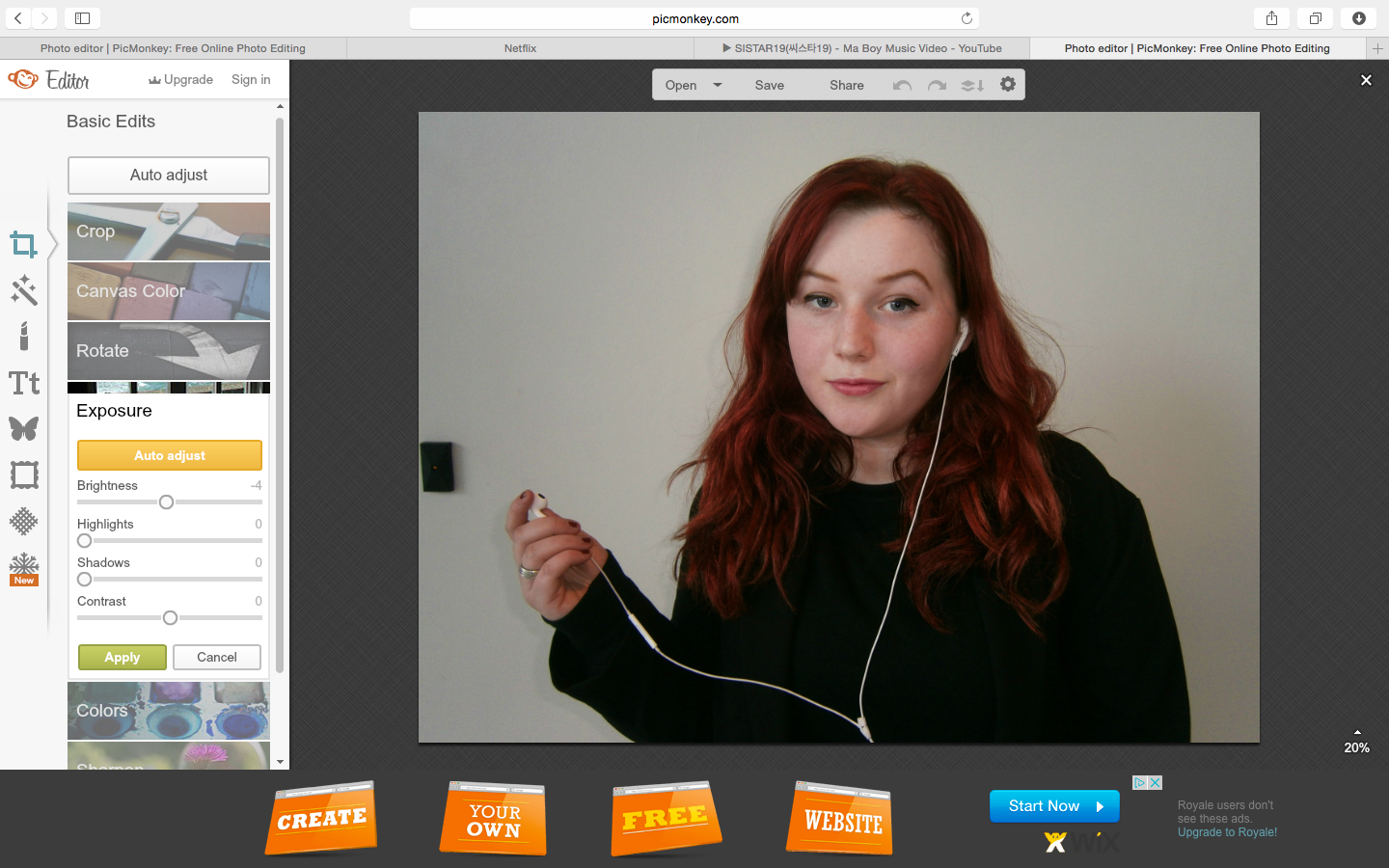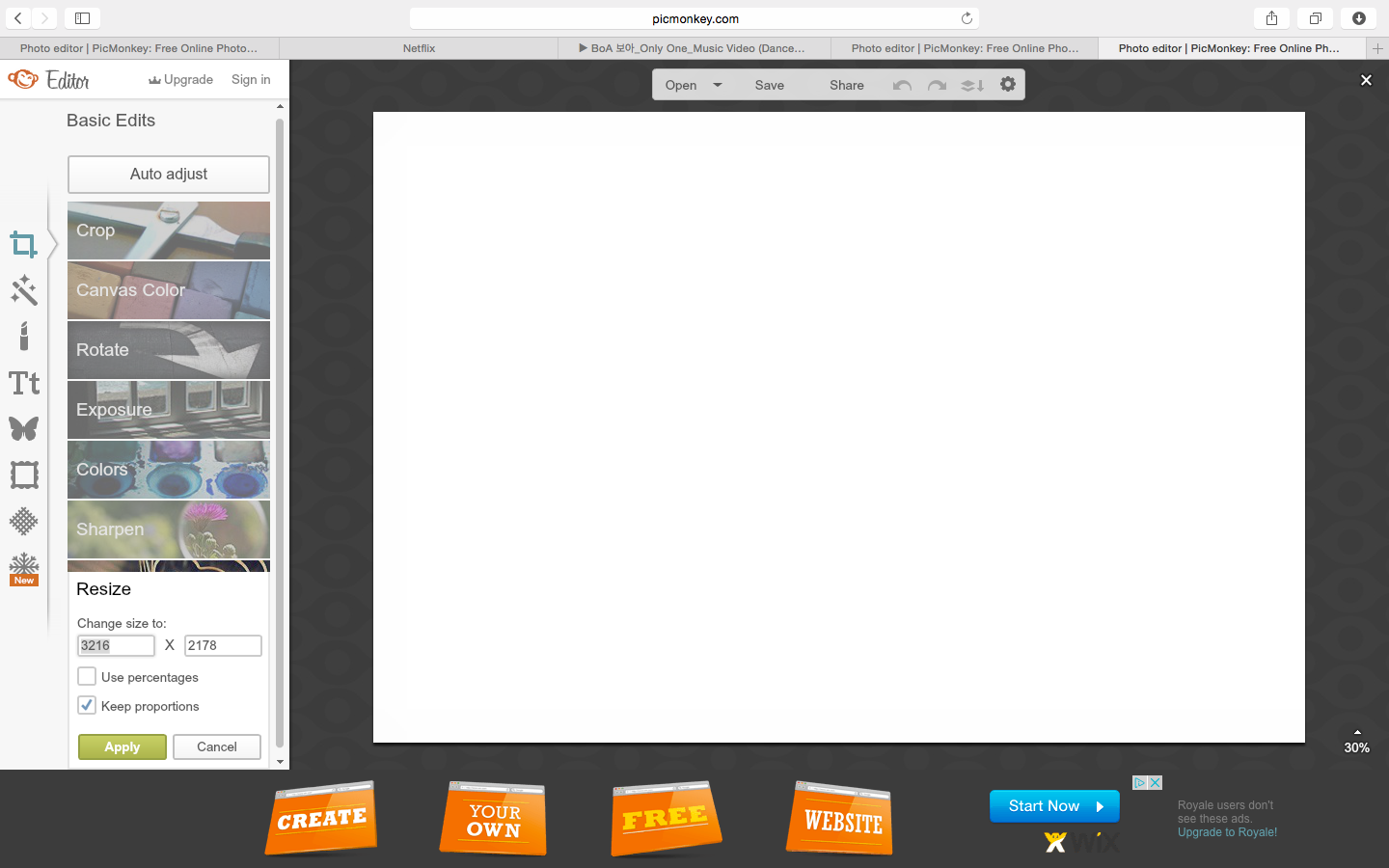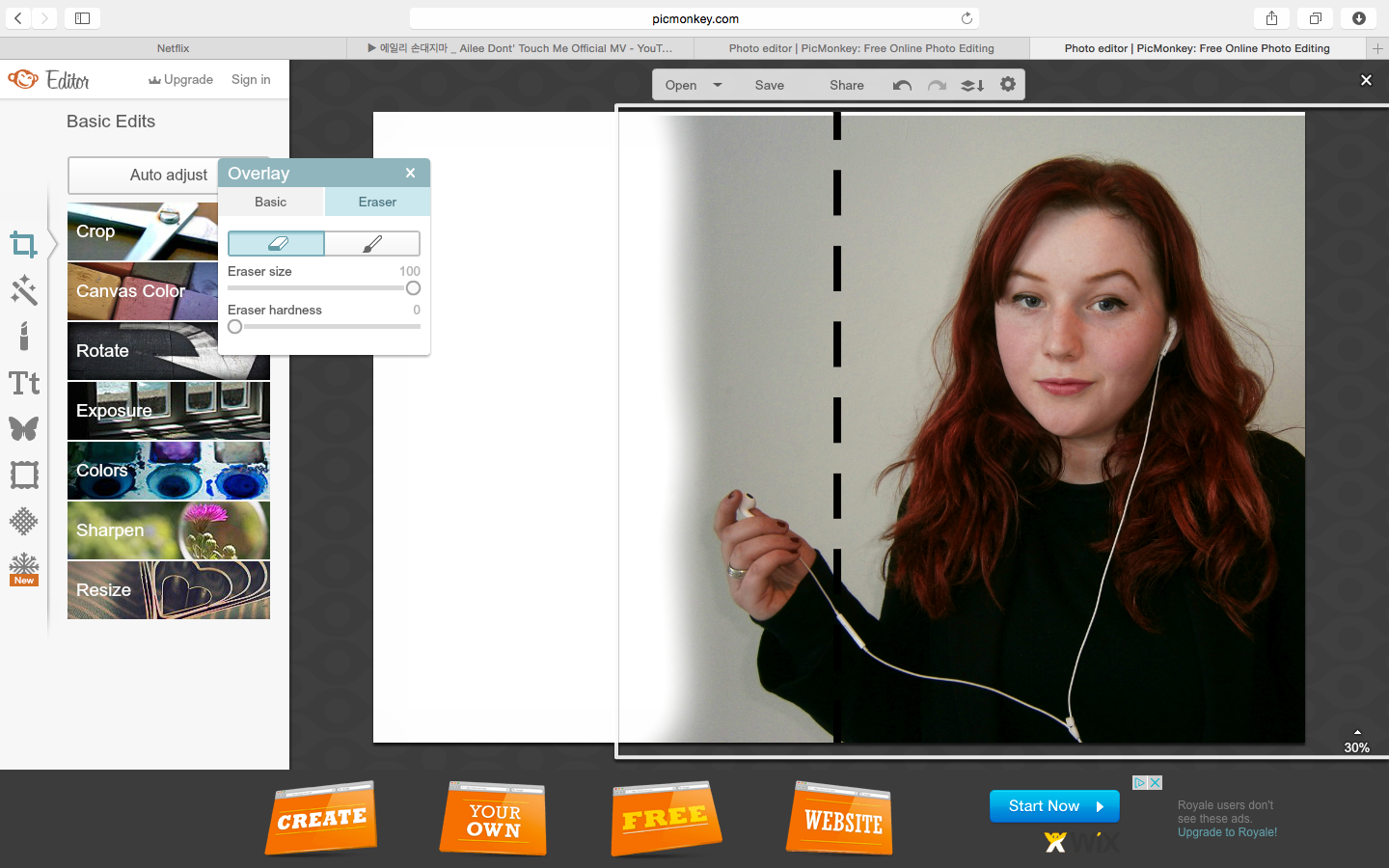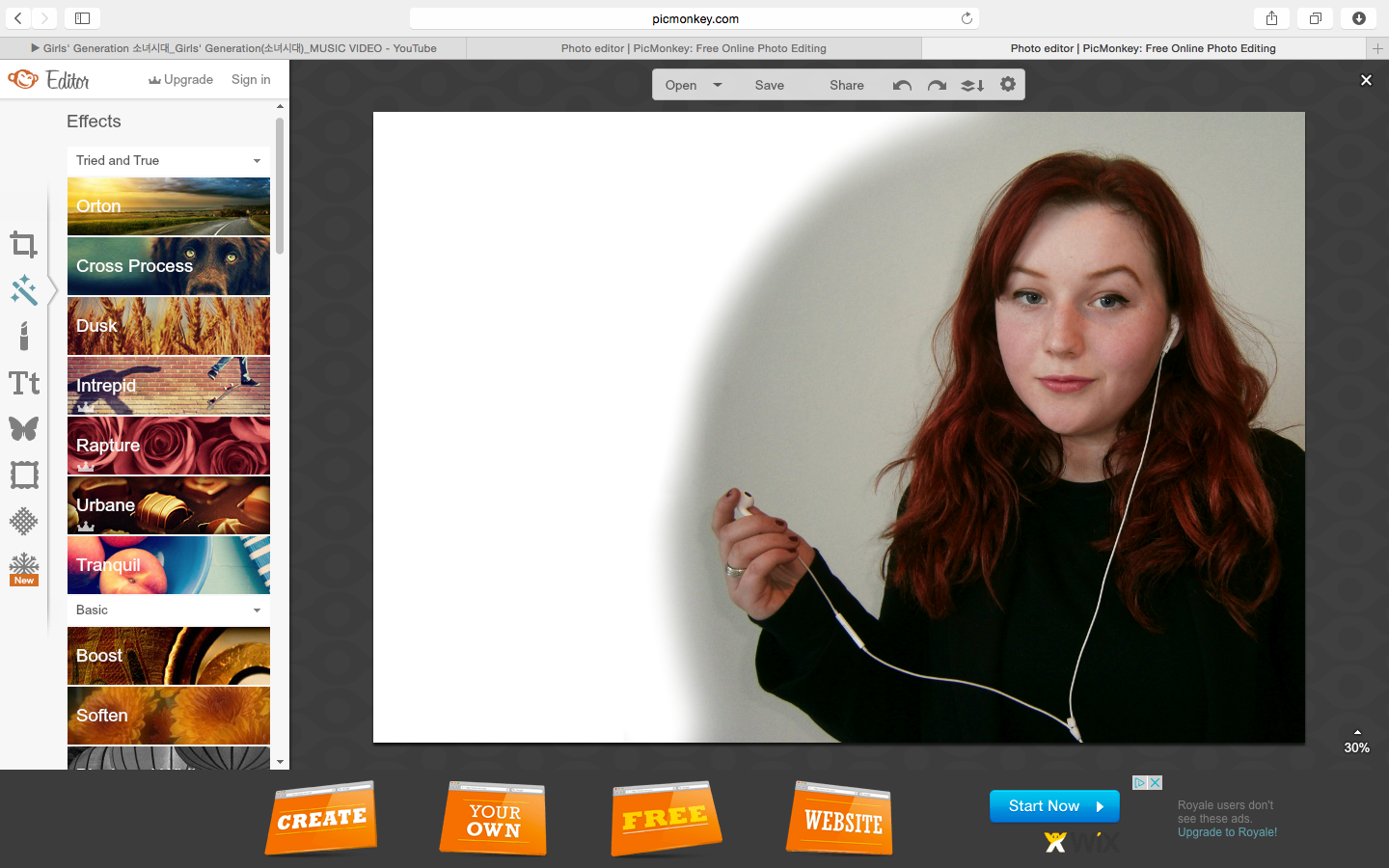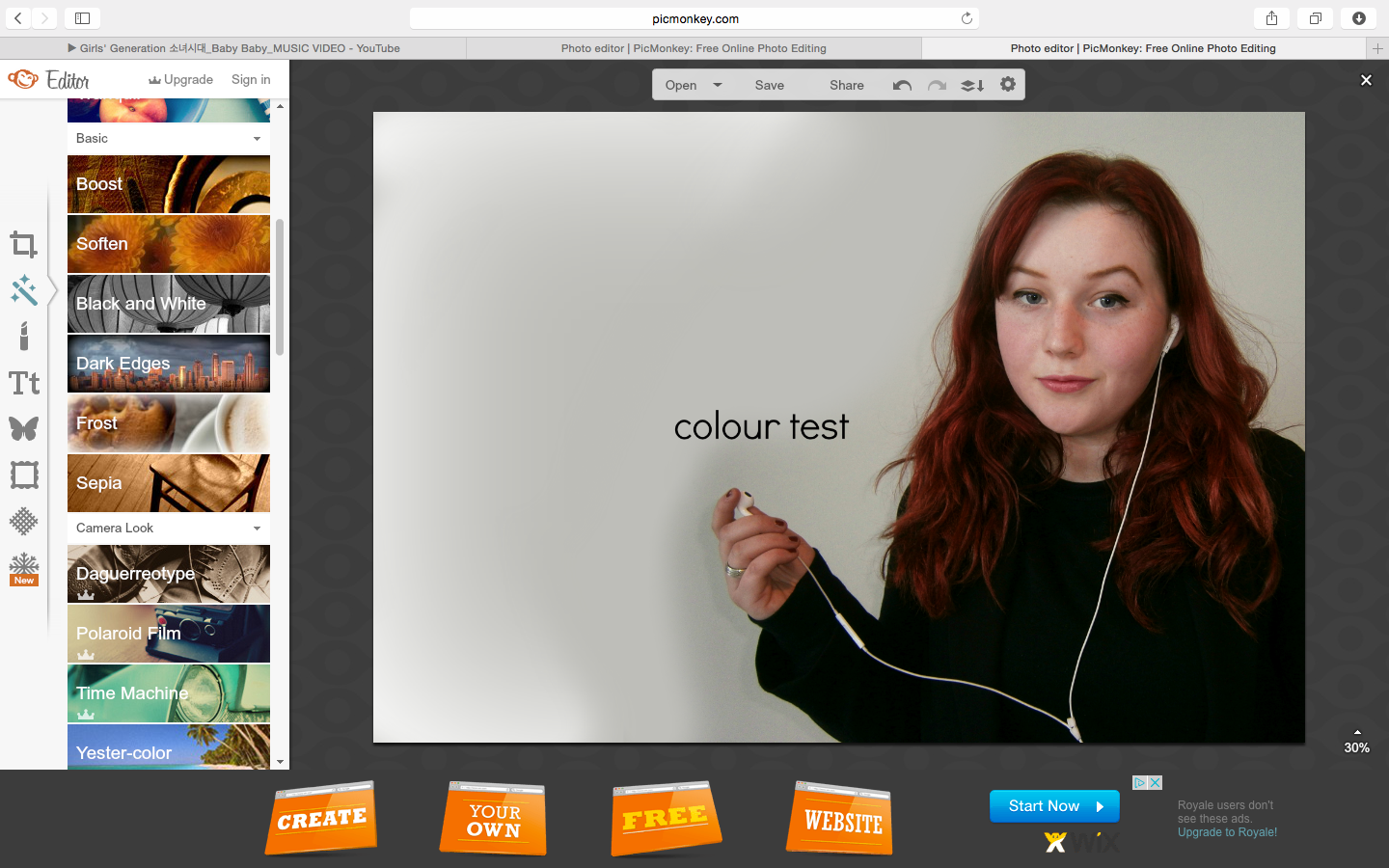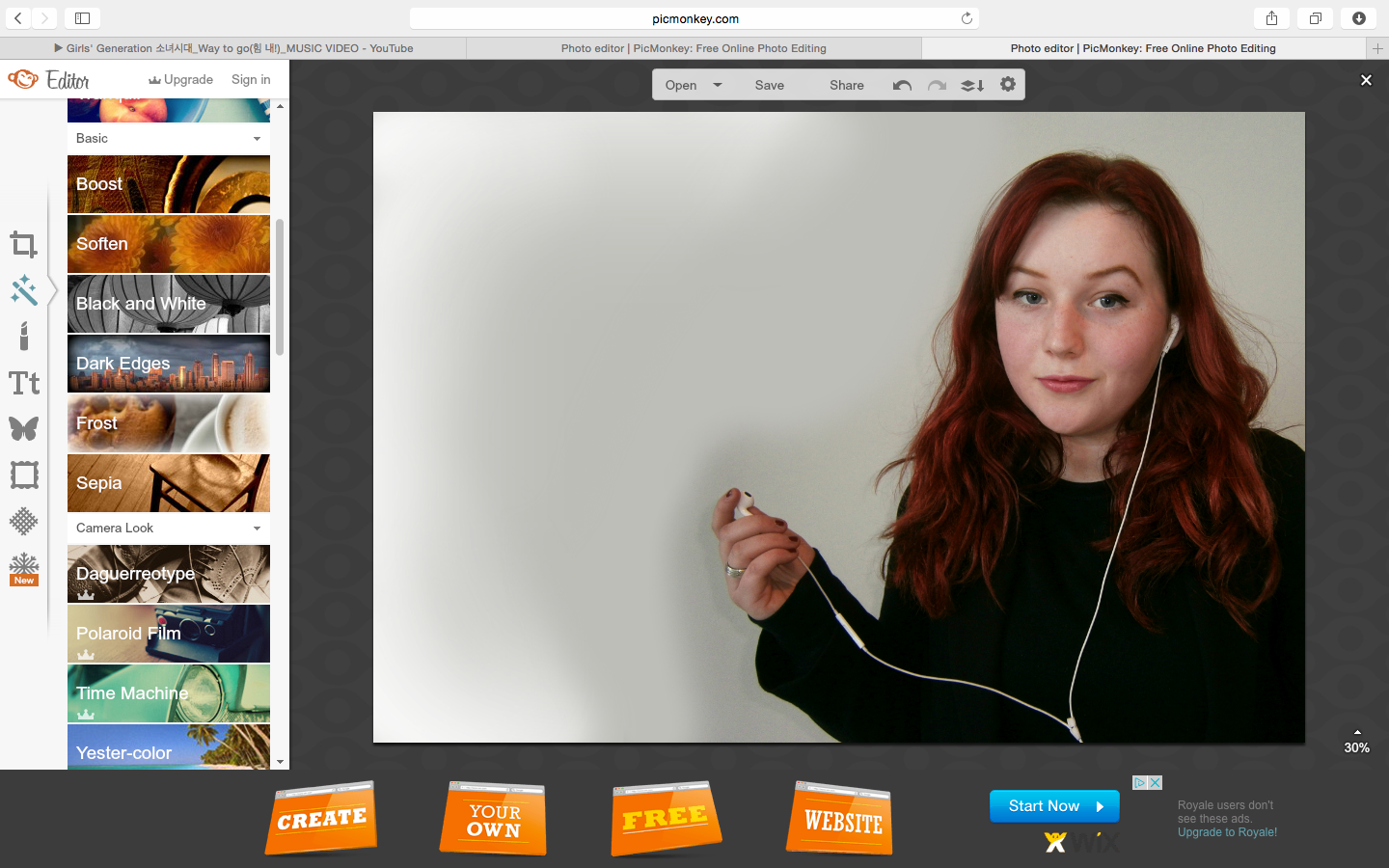Following my plans to improve my documentary from my audience feedback comments, below is the final version; with a shorter duration of location shots, and a longer duration of text to make this easier to read.
The Role of Sexism from Courtney O'Donnell on Vimeo.
TV listings magazine final:
Click to enlarge or download the higher quality, original file here.
Newspaper advertisement final:
Also click to enlarge or download the higher quality, original file here.
Friday, 27 March 2015
Thursday, 26 March 2015
Audience Feedback
After receiving audience feedback from my older demographic within my interview with the representative of this audience, Mr Mooney, I have collected feedback for all of my products from my younger audience demographic, by targeting them online through social media. I have presented and analysed this feedback below using Emaze.


Final Edit of my Documentary
Here is the final edit of my main documentary production, 'The Role of Sexism'. I will now collect my final audience feedback for this product.
The Role of Sexism from Courtney O'Donnell on Vimeo.
The Role of Sexism from Courtney O'Donnell on Vimeo.
Dirt Book
To continue with planning and organising my progress to meet my timescale, I have recorded this within my 'dirt book', below.
Genre, Audience and Exhibition
I have presented the genre, audience and exhibition research of all of my three productions within the Prezi presentation below.
Sunday, 22 March 2015
Final Newspaper Advertisement
I have edited my newspaper advertisement using PicMonkey to;
I then discovered from researching Channel 4's advertisements online, that the institution represents brand identity through a specific layout, font and use of text boxes; which is instructed within the Channel 4 style guide. I used this as a guide for formatting my advertisement.
One of the things I found was that Channel 4 have their own specific font named 'C4 condensed' for all promotions and off-air usage, which can only be used through Open Type. I researched how to use/ download this software, but as it had to be purchased, I screenshotted the font examples from the guide, and cropped the letters I needed on Microsoft Word in order to follow the conventional, strict layout of the brand I'm representing.
The title and subtitle also follow Channel 4's conventions as all print advertisements include the programme's main title, and scheduling information for the subtitle, as found from my research into genre and the guide. I then screenshotted these and added them to a new document over my background image - which I measured as 25.9mm (w) x 15.5mm (h) to suit my exhibitor's format. I cropped around their white background to form the Channel 4 textboxes, and positioned them conventionally against the lower left edge of my background.
The Channel 4 logo was also guided to be placed 10mm (in relation to my advertisement dimensions) from the centre of the right edge of my background. I downloaded and overlaid the conventionally white logo, and adjusted the height with Microsoft Word's ruler to 5.2cm, as its height = the heigh of my advertisement x 0.333 according to the guide.
Finally, following Channel 4's guided conventions, I added a short url of the proposed webpage for my documentary on the Channel 4 website, in the same simple, rounded, small font and position.
Above is a screenshot of the final version of my newspaper advertisement, which I will be printing due to its failure to upload to SlideShare, and in order to print the accurate dimensions. Overall, I feel that it is appropriately attractive to my younger demographic due to the vibrant, artistic colour scheme, which is appropriate for my 'i' exhibitor, and also represents and creates an enigma for my documentary through the semiotic of the music industry with my headphone mise en scene, and educated/ information with the bookshelf. This use of interpretative semiotics is also conventional to Channel 4 newspaper advertisements, which links my ancillary product to my documentary exhibitor. The costume, model, setting and style of photography also links to my listings magazine and documentary effectively, forming relating, supportive products. Finally, I have met my conventions of formatting with great detail from following the Channel 4 style guide throughout my editing, resolving the issue of fonts by individual cropping them, and from deconstructing the 'i' newspaper in this post.
- crop to the proportions of 'i' landscape advertisements
- adjust the rotation of the image, making the bookshelf lines straight and therefore aesthetically pleasing
- enhance Rowan's features and hair using the blemish tool, lip tint, smooth to remove shine, and the red tint to enhance and brighten the colour of her hair
- contrast, brightness, shadows, highlights and saturation to enhance the colours of the image
- use the black and white effect which I erased over Rowan to de-saturate the background, drawing more attention to Rowan as the focal point, and then use on an additional layer to remove the yellow tones from the bookshelf
- soften the background to make it less in focus, drawing attention to Rowan and following the conventional style of 'i' newspaper advertisements, as found within my deconstruction post
I then discovered from researching Channel 4's advertisements online, that the institution represents brand identity through a specific layout, font and use of text boxes; which is instructed within the Channel 4 style guide. I used this as a guide for formatting my advertisement.
One of the things I found was that Channel 4 have their own specific font named 'C4 condensed' for all promotions and off-air usage, which can only be used through Open Type. I researched how to use/ download this software, but as it had to be purchased, I screenshotted the font examples from the guide, and cropped the letters I needed on Microsoft Word in order to follow the conventional, strict layout of the brand I'm representing.
The title and subtitle also follow Channel 4's conventions as all print advertisements include the programme's main title, and scheduling information for the subtitle, as found from my research into genre and the guide. I then screenshotted these and added them to a new document over my background image - which I measured as 25.9mm (w) x 15.5mm (h) to suit my exhibitor's format. I cropped around their white background to form the Channel 4 textboxes, and positioned them conventionally against the lower left edge of my background.
The Channel 4 logo was also guided to be placed 10mm (in relation to my advertisement dimensions) from the centre of the right edge of my background. I downloaded and overlaid the conventionally white logo, and adjusted the height with Microsoft Word's ruler to 5.2cm, as its height = the heigh of my advertisement x 0.333 according to the guide.
Finally, following Channel 4's guided conventions, I added a short url of the proposed webpage for my documentary on the Channel 4 website, in the same simple, rounded, small font and position.
Above is a screenshot of the final version of my newspaper advertisement, which I will be printing due to its failure to upload to SlideShare, and in order to print the accurate dimensions. Overall, I feel that it is appropriately attractive to my younger demographic due to the vibrant, artistic colour scheme, which is appropriate for my 'i' exhibitor, and also represents and creates an enigma for my documentary through the semiotic of the music industry with my headphone mise en scene, and educated/ information with the bookshelf. This use of interpretative semiotics is also conventional to Channel 4 newspaper advertisements, which links my ancillary product to my documentary exhibitor. The costume, model, setting and style of photography also links to my listings magazine and documentary effectively, forming relating, supportive products. Finally, I have met my conventions of formatting with great detail from following the Channel 4 style guide throughout my editing, resolving the issue of fonts by individual cropping them, and from deconstructing the 'i' newspaper in this post.
Plan and Deconstructions of Newspaper Advertisements
Within the SlideShare presentation below, I have deconstructed four newspaper advertisements from my exhibitor for this ancillary product, 'i', and made comparisons between these. This has allowed me to understand the layout, format and styles of newspaper advertisements within my exhibitor, and plan my ancillary product appropriately.
Newspaper Deconstruction from Courtney O'Donnell
From this, I will begin to design and make my newspaper advertisement ancillary product, whilst referring to this research and plan.
From this, I will begin to design and make my newspaper advertisement ancillary product, whilst referring to this research and plan.
Saturday, 21 March 2015
Final TV Listings Magazine
I used PicMonkey to edit my image and create my background, and then formatted this into the TV listings magazine double page spread using Microsoft Word, due to its precise measurement ruler to accurate follow the Radio Times house style, and more professional text editing tools than PicMonkey.
Overall, I am happy with the professionalism, sophistication and artistic style of this ancillary product, achieved by my conventional, stylistic format to the Radio Times, as well as my youthful and bold photography. The article effectively creates an enigma for my documentary by introducing its theme, relevance to contemporary society and modern culture, features such as interviews and deconstructions, and purpose to investigate sexism within the media, which are conventional aspects to present and advertise programmes within the Radio Times. Furthermore, I feel that I have engaged my audience and readers effectively through my interview with Rowan and descriptions of her as an innovative young presenter; not only creating a connection between the reader and my presenter through this focus, but also engaging young people and justifying my young model, which some older readers may be surprised to see alongside the older adults within this TV listings magazine. Finally, I have included detailed information of when my documentary is scheduled (which is the main purpose of this ancillary product), and accurately met the conventions for my genre and exhibitor.
As my ancillary product was formatted especially to be printed, and because I cannot upload this as a Word document on SlideShare etc. due to my unsupported layout, I will submit this as a printed hard copy. However, below I have added a screenshot of the final version.
The main inspiration for this ancillary product, as analysed in my screenshots:
 |
| The basic, limited text editing and formatting options with using PicMonkey. |
 |
| Editing the width and height of my image in cm's using Word to the exact measurements of a Radio Times double page spread (which I previously measured from my copy). |
 |
| Using the Tabloid Oversize option for my page layout to accurately follow the Radio Time's format and avoid my double page being cropped when printed. |
 |
| I added the conventional fine, black line dividing the page numbers and the article, and cropped this at my image to look professional and aesthetically pleasing. |
 |
| Adding the conventional Radio Times programming information and dividing line, using the appropriate fonts, sizes and styles for each separated piece of information, which I had to test. |
 |
| Adding my catchy image caption, which is conventional to the Radio Times, using the same font styles. |
Overall, I am happy with the professionalism, sophistication and artistic style of this ancillary product, achieved by my conventional, stylistic format to the Radio Times, as well as my youthful and bold photography. The article effectively creates an enigma for my documentary by introducing its theme, relevance to contemporary society and modern culture, features such as interviews and deconstructions, and purpose to investigate sexism within the media, which are conventional aspects to present and advertise programmes within the Radio Times. Furthermore, I feel that I have engaged my audience and readers effectively through my interview with Rowan and descriptions of her as an innovative young presenter; not only creating a connection between the reader and my presenter through this focus, but also engaging young people and justifying my young model, which some older readers may be surprised to see alongside the older adults within this TV listings magazine. Finally, I have included detailed information of when my documentary is scheduled (which is the main purpose of this ancillary product), and accurately met the conventions for my genre and exhibitor.
As my ancillary product was formatted especially to be printed, and because I cannot upload this as a Word document on SlideShare etc. due to my unsupported layout, I will submit this as a printed hard copy. However, below I have added a screenshot of the final version.
The main inspiration for this ancillary product, as analysed in my screenshots:
 |
| Article on Jon Snow's Channel 4 documentary within the Radio Times. |
Friday, 20 March 2015
Cultural Codes and Scheduling
To research the cultural codes of my exhibitor, Channel 4's documentaries, and how they effectively reach their target audience through character representations and scheduling, I have analysed the cultural codes of documentaries from the Channel 4 website. This has allowed me to understand how I can reach my target audience through time and date airing of my documentary, which I can include within my ancillary product information. I have presented this research below using SlideShare.
Thursday, 19 March 2015
Copyright and Permissions
As I am using archive footage and outsourcing my music by hiring a musician/ composer (Maya Law), I have researched the copyright issues that I may face.
http://www.desktop-documentaries.com/do-i-need-permission-to-use-file-footage-and-other-video-material.html
From this website, I found that archive footage is only legal if it is royalty free; however I visited the royalty free archive footage website and was unable to find any of my videos. Another article by this website suggested that I would need to get permission for the footage from the producers, just as I had from my musician to make it legal. As the main producer of my archive footage is a multi-national media conglomerate, Universal Music Group, it is clear that they would not be available to discuss copyright for my A level. Therefore, my next step was to investigate UK Fair Use laws, as the article suggested.
http://www.copyrightservice.co.uk/copyright/p09_fair_use
Fair Use is the idea that if copyright laws are too restrictive, it may stifle free speech, news reporting, or result in disproportionate penalties for inconsequential or accidental inclusion. Therefore they allow certain content to be legally used for these reasons. From researching the conditions, I found that it would be legal for me to use my archive footage as it falls under the following;
http://www.desktop-documentaries.com/do-i-need-permission-to-use-file-footage-and-other-video-material.html
From this website, I found that archive footage is only legal if it is royalty free; however I visited the royalty free archive footage website and was unable to find any of my videos. Another article by this website suggested that I would need to get permission for the footage from the producers, just as I had from my musician to make it legal. As the main producer of my archive footage is a multi-national media conglomerate, Universal Music Group, it is clear that they would not be available to discuss copyright for my A level. Therefore, my next step was to investigate UK Fair Use laws, as the article suggested.
http://www.copyrightservice.co.uk/copyright/p09_fair_use
Fair Use is the idea that if copyright laws are too restrictive, it may stifle free speech, news reporting, or result in disproportionate penalties for inconsequential or accidental inclusion. Therefore they allow certain content to be legally used for these reasons. From researching the conditions, I found that it would be legal for me to use my archive footage as it falls under the following;
- the quoted material is justified by my narration, and no more than necessary is included
- I will mention the source of my quoted material, along with the name of the author (artist and production studio)
- it is used for the purpose of news reporting and education, as this is the purpose of the documentary genre
- it falls under education use as my A level coursework
This has resolved my concerns with copyrighted footage, therefore from this point I will add the credits to my archive footage to ensure that it is legal.
Finally, for shooting within my public setting, I spoke to the assistant manager of the Forum library on her floor to describe my production, and receive spoken permission to shoot within this location.
Finally, for shooting within my public setting, I spoke to the assistant manager of the Forum library on her floor to describe my production, and receive spoken permission to shoot within this location.
Adding Statistics to my Documentary
After showing my documentary to my teacher for feedback, it was recommended that I added statistics about sexism within the media to make my documentary more informative and visually stimulating.
Therefore I referred back to my research of this and found a useful statistic about female production roles within the film and TV industries which is appropriate to overlay for Mr Mooney's interview which is quite visually bare, and discusses this exact topic, allowing me to enhance this discussion. Furthermore, this information from a reliable source increases his credibility as an expert interviewee. However as the statistic is outdated (2012), I revisited the website http://www.wftv.org.uk/resources/reports-and-statistics for an updated version.
"In 2013-14, women comprised 26% of all directors, writers, producers, executive producers, editors, and cinematographers. This is even with the figure from 2011-12 and up 2 percentage points from 24% in 2008-09." - Martha Laurzen, 'Independent Women'
"Fewer than 9% of the UK’s film directors are female." - Melody Bridges, 'Why Aren't There More Women Director's In The UK Film And TV Industry?', Women in Film and Television UK
I also found information which is also relevant to the UK, and relates to the next steps for equality of production roles which Mr Mooney discussed;
"Directors UK have published a report that sets out recommendations for production companies and broadcasters to increase the employment of women directors in UK television production. The ambition is to work with production companies and broadcasters so that in 2017 women are directing 30% of all original programmes broadcast."
I will be using all of these statistics within the final section of my documentary, but make them shorter so that they are more concise to read. Furthermore, to emphasise Rowan's definitions of sexism and misogyny, allowing a firm knowledge of these key terms to understand my documentary for my audience, I'm adding their definitions in text. This also repairs the issue of jumping between clips where I had to split the shot between two takes, effecting the footage but not the audio.
Sexism: Prejudice, stereotyping, or discrimination, typically against women, on the basis of sex.
Misogyny: Dislike of, contempt for, or ingrained prejudice against women.
- Oxford Dictionary
Therefore I referred back to my research of this and found a useful statistic about female production roles within the film and TV industries which is appropriate to overlay for Mr Mooney's interview which is quite visually bare, and discusses this exact topic, allowing me to enhance this discussion. Furthermore, this information from a reliable source increases his credibility as an expert interviewee. However as the statistic is outdated (2012), I revisited the website http://www.wftv.org.uk/resources/reports-and-statistics for an updated version.
"In 2013-14, women comprised 26% of all directors, writers, producers, executive producers, editors, and cinematographers. This is even with the figure from 2011-12 and up 2 percentage points from 24% in 2008-09." - Martha Laurzen, 'Independent Women'
"Fewer than 9% of the UK’s film directors are female." - Melody Bridges, 'Why Aren't There More Women Director's In The UK Film And TV Industry?', Women in Film and Television UK
I also found information which is also relevant to the UK, and relates to the next steps for equality of production roles which Mr Mooney discussed;
"Directors UK have published a report that sets out recommendations for production companies and broadcasters to increase the employment of women directors in UK television production. The ambition is to work with production companies and broadcasters so that in 2017 women are directing 30% of all original programmes broadcast."
I will be using all of these statistics within the final section of my documentary, but make them shorter so that they are more concise to read. Furthermore, to emphasise Rowan's definitions of sexism and misogyny, allowing a firm knowledge of these key terms to understand my documentary for my audience, I'm adding their definitions in text. This also repairs the issue of jumping between clips where I had to split the shot between two takes, effecting the footage but not the audio.
Sexism: Prejudice, stereotyping, or discrimination, typically against women, on the basis of sex.
Misogyny: Dislike of, contempt for, or ingrained prejudice against women.
- Oxford Dictionary
Thursday, 12 March 2015
Evaluation
I've began writing my evaluation of my A2 portfolio and productions. Here is a link to my Wix account, where I will be posting my evaluation: courtneyodonnell97.wix.com/a2evaluation
Wednesday, 11 March 2015
Creating my Listings Magazine - Background
As I stated in my photography post that I would edit my two best images to test which is most appropriate for the listings magazine background, I began editing this image using Photoshop to blur and straighten the background to overlay, and enhance my model.
However, I decided that the background of this image was in fact too busy in comparison to the sophisticated, simple backgrounds within the Radio Times listing magazine (my exhibitor). Although I had planned to draw the attention of young people with this boldly colourful background, and introduce the main library location of my documentary, I felt that my second image was more appropriate for reflecting the seriousness of my documentary, and for overlaying text clearly. Therefore considering the time scale and my inexperience with using Photoshop, I decided to use Picmonaey to edit my image and create my listings magazine, due to my accessibility and familiarity with this software, allowing me to use it to its greatest effect and produce a better product.
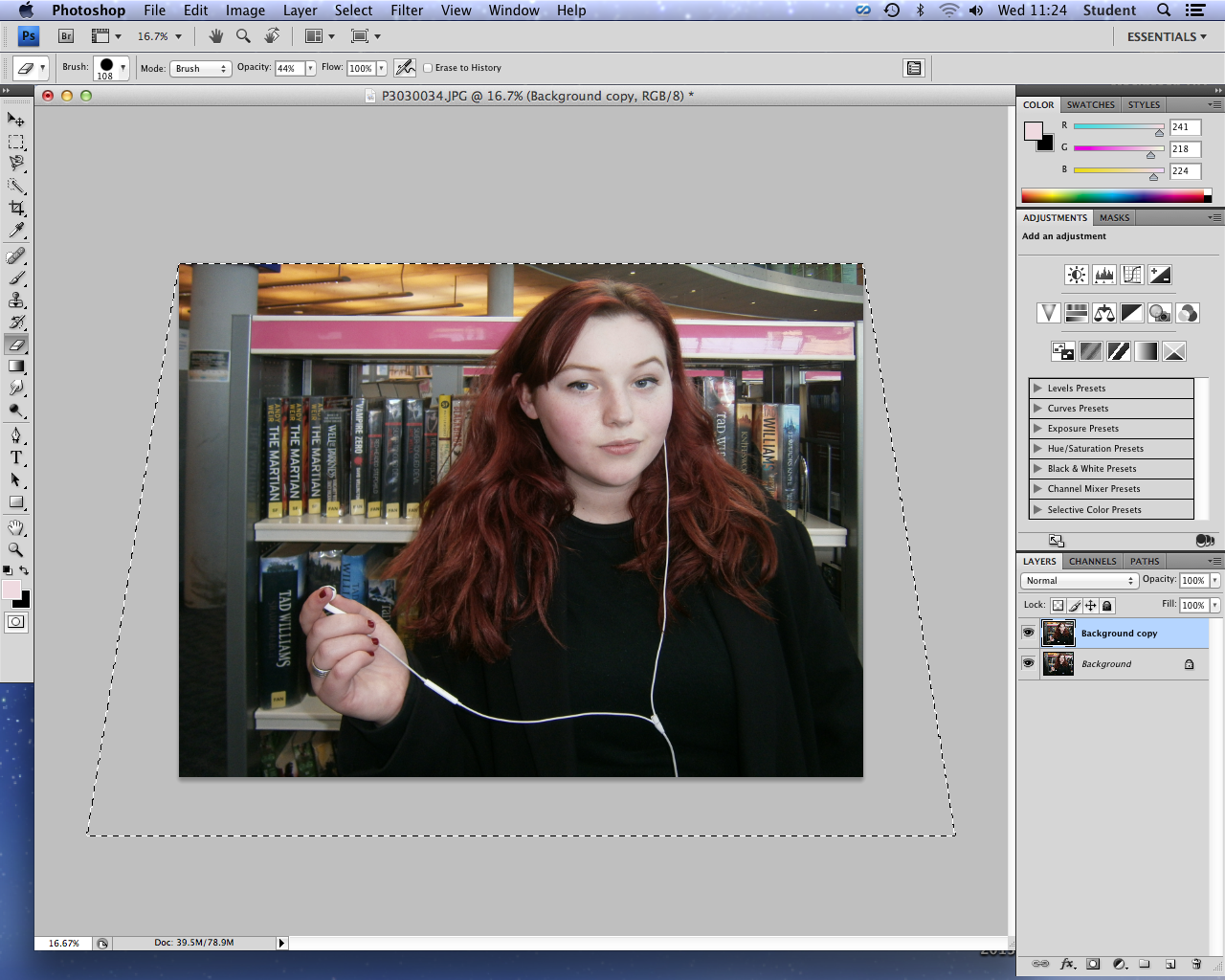 |
| Straightening my image to create an aesthetically pleasing, professional straight background with the bookshelf. |
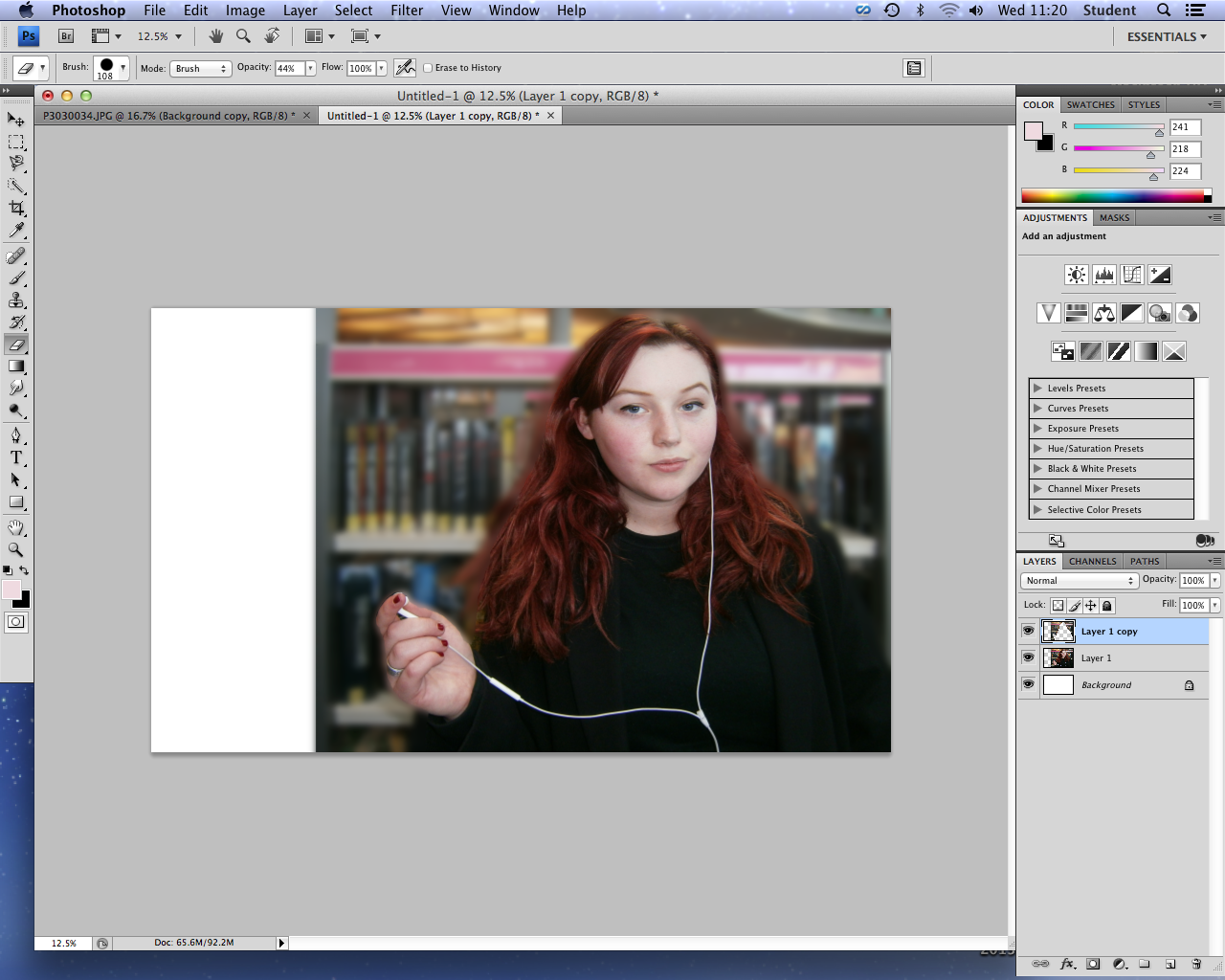 |
| Finished blurred image background. |
However, I decided that the background of this image was in fact too busy in comparison to the sophisticated, simple backgrounds within the Radio Times listing magazine (my exhibitor). Although I had planned to draw the attention of young people with this boldly colourful background, and introduce the main library location of my documentary, I felt that my second image was more appropriate for reflecting the seriousness of my documentary, and for overlaying text clearly. Therefore considering the time scale and my inexperience with using Photoshop, I decided to use Picmonaey to edit my image and create my listings magazine, due to my accessibility and familiarity with this software, allowing me to use it to its greatest effect and produce a better product.
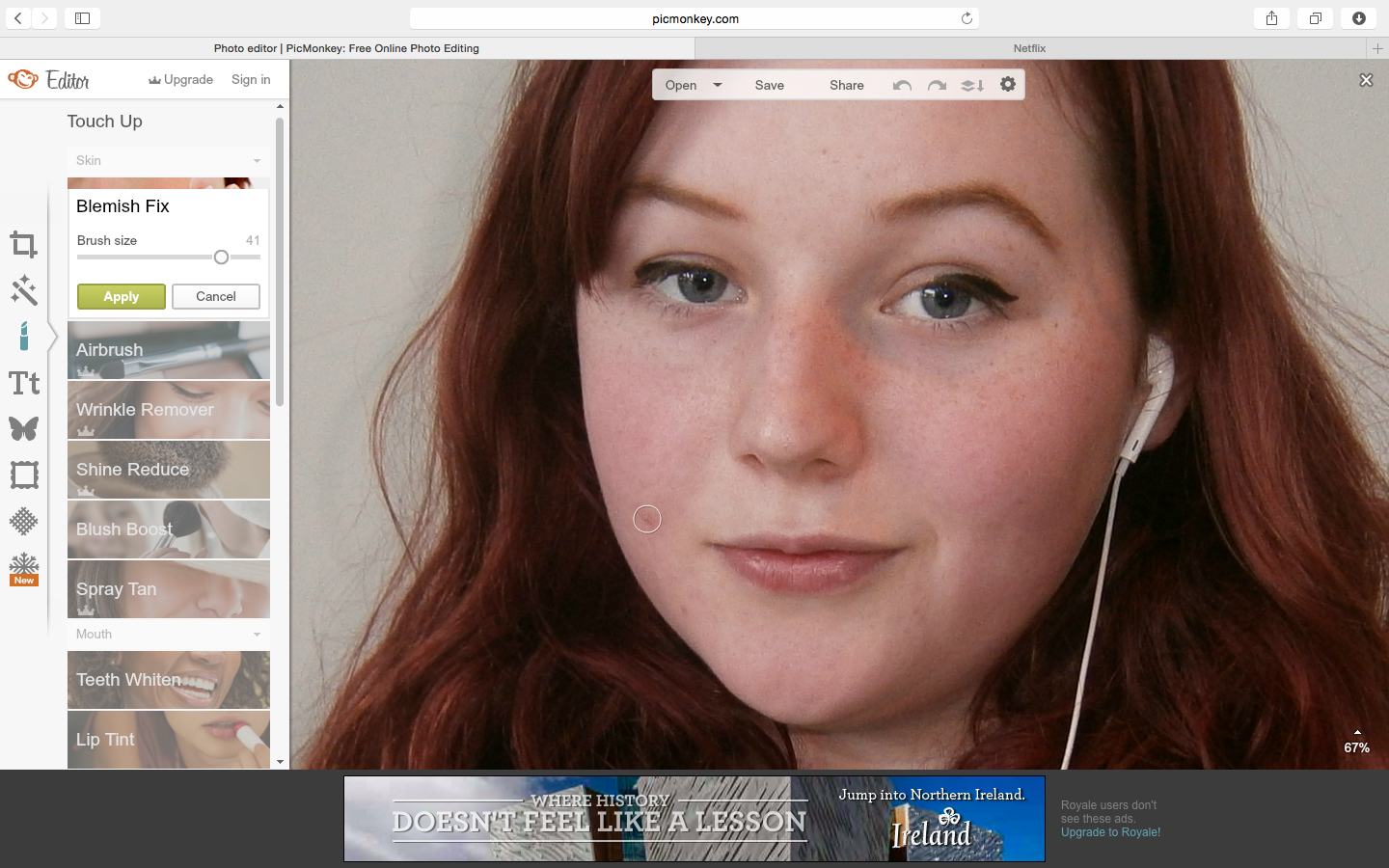 |
| I began by enhancing her skin using the blemish fix tool, as demonstrated by these before and after images. |
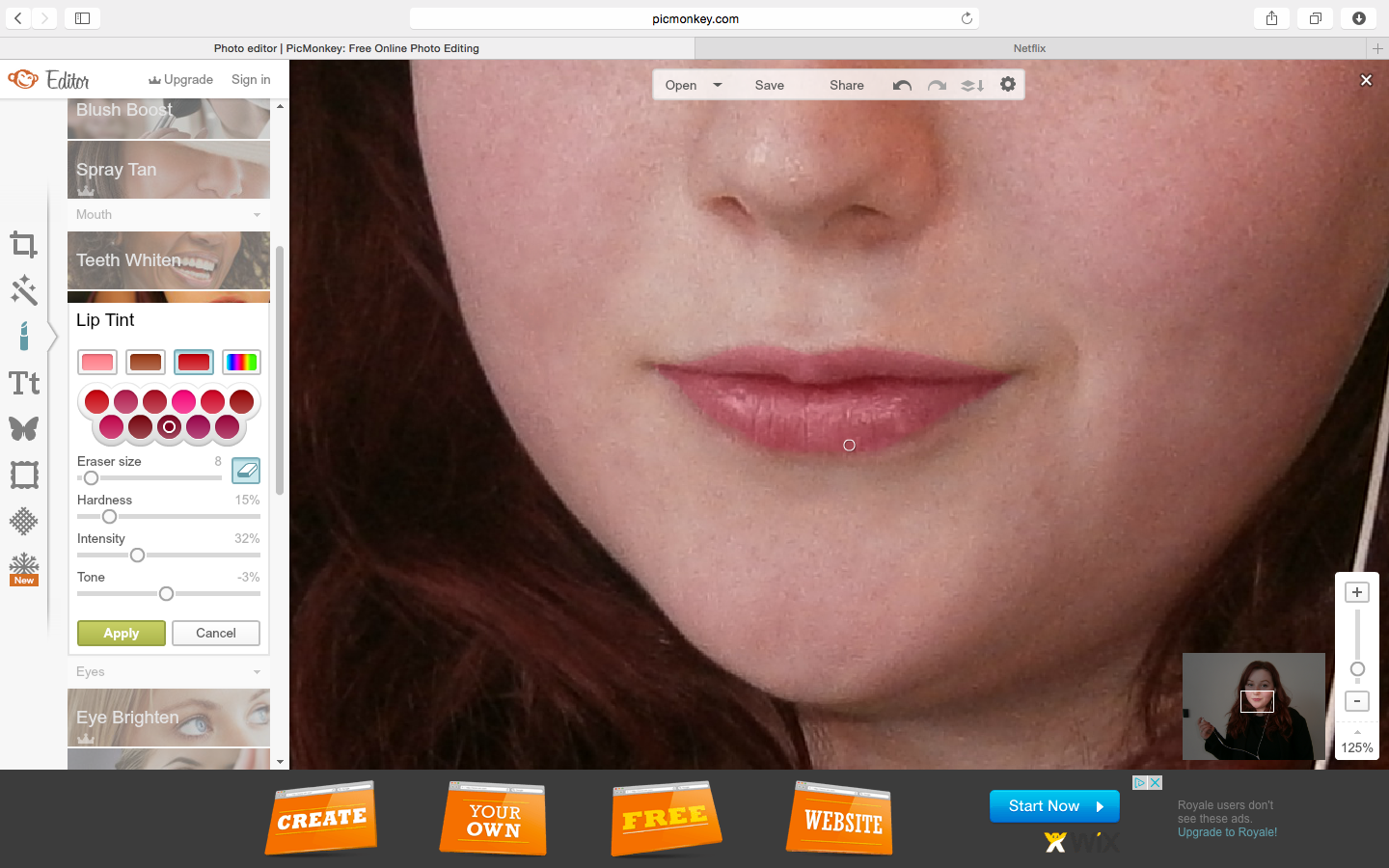 |
| I also added subtle colour to her lips, creating a more bold, colourful and youthful image, relating to my younger demographic. |
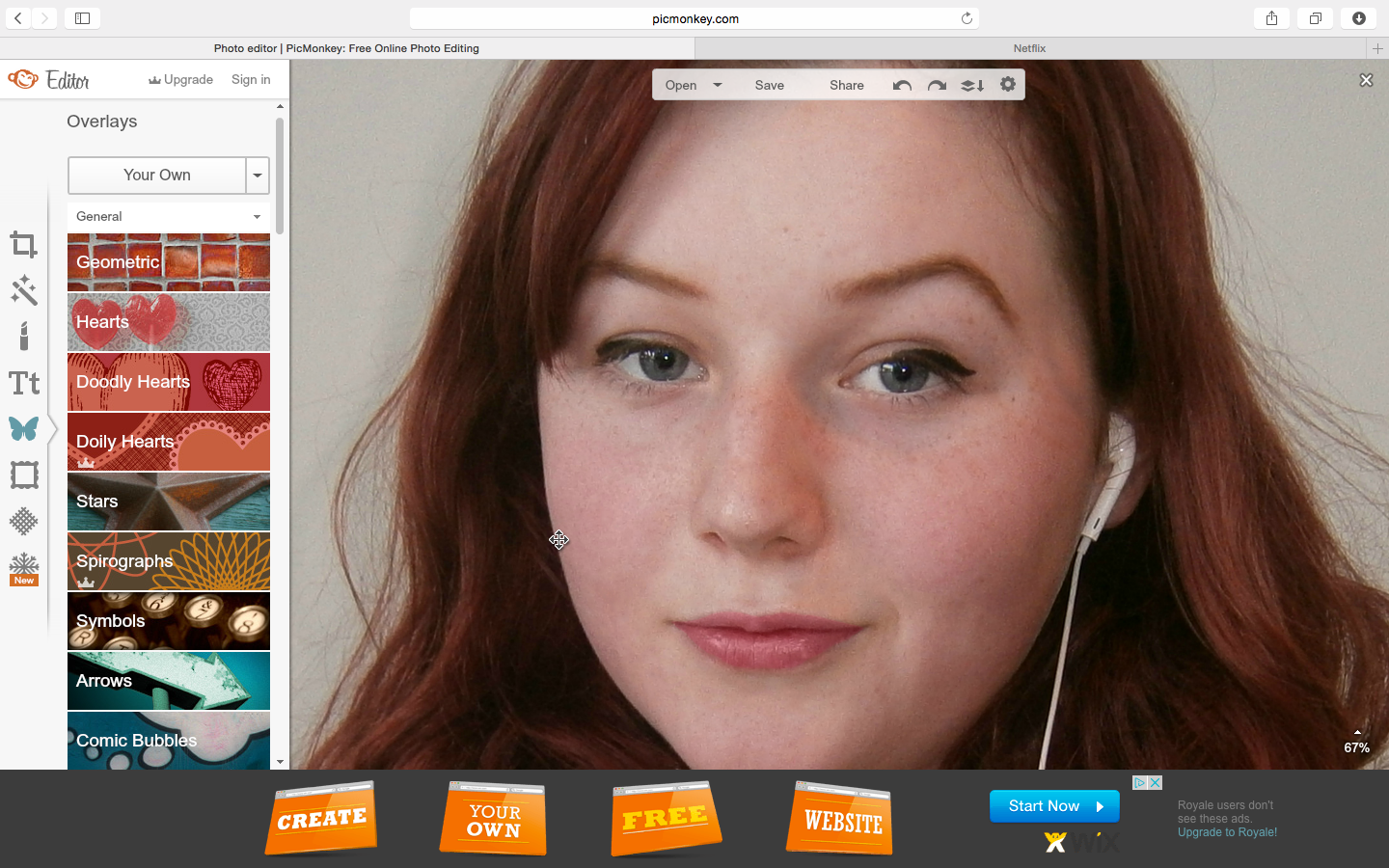 |
| Final raised eyebrow. |
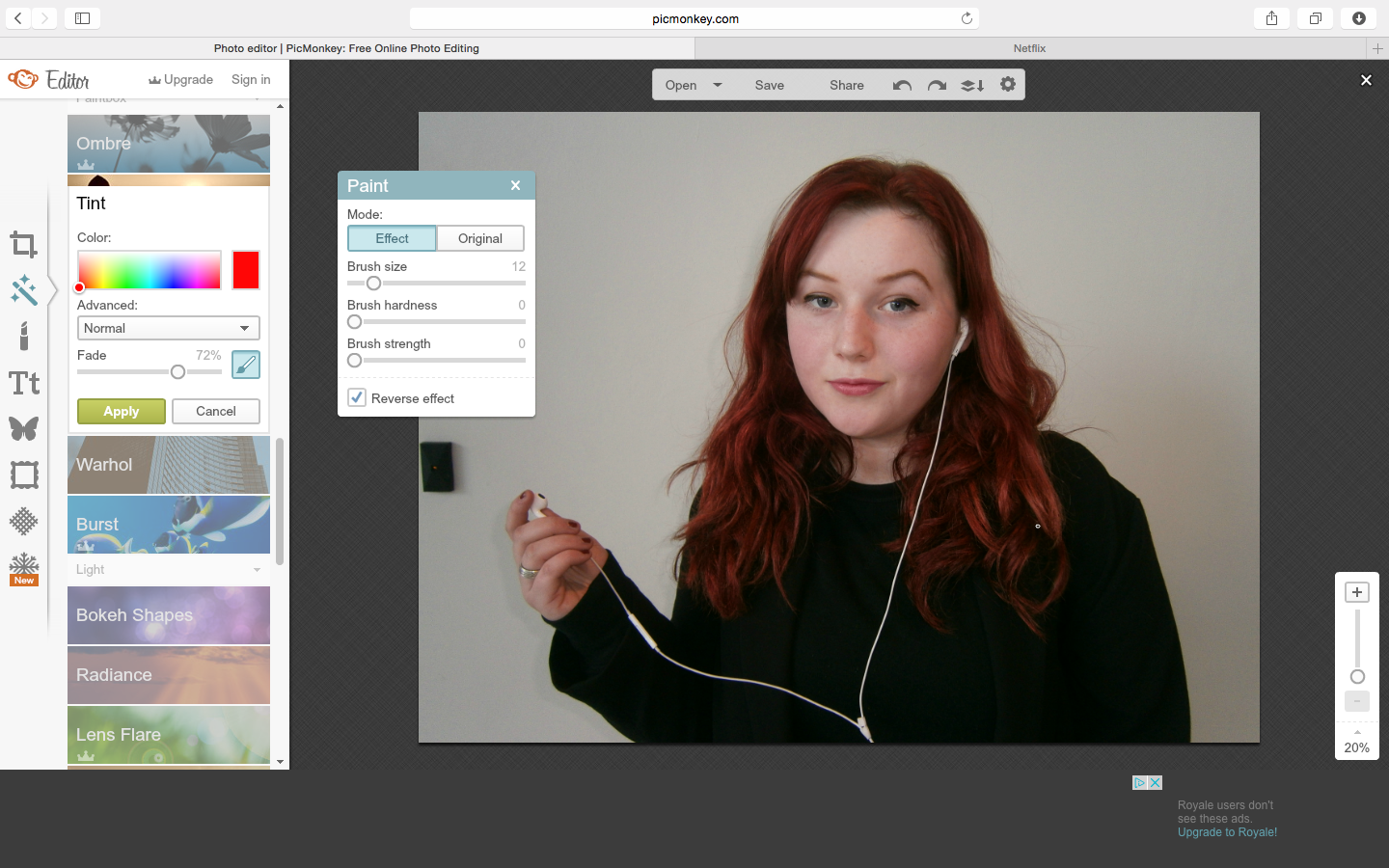 |
| To follow my plan of enhance her bold red hair against the soft, de-saturated background, creating a youthful and stylised look, I used the precisely painted over her hair with the red tint tool. |
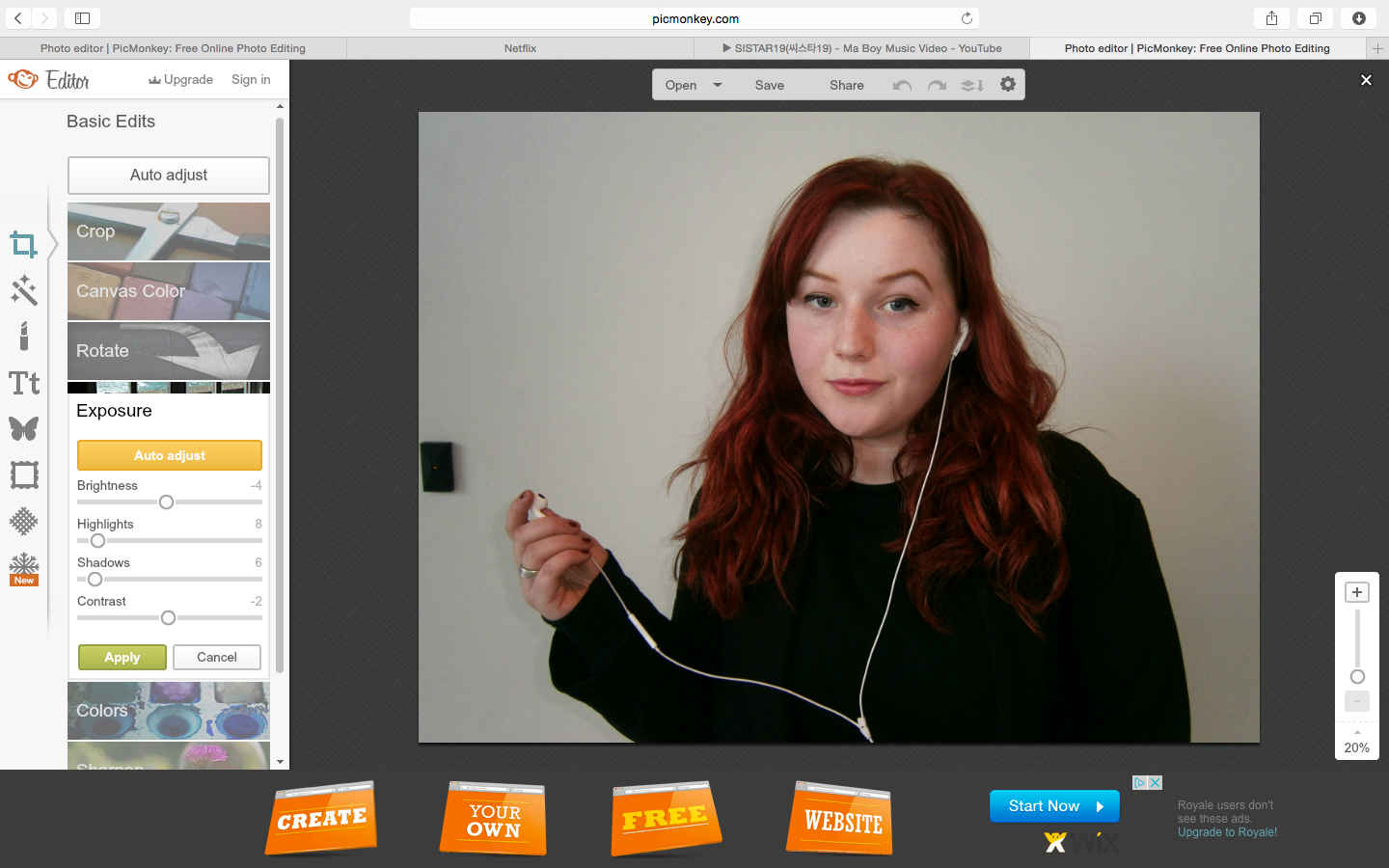 |
| I also enhanced the colours of this image through the highlights and shadow tools, bringing out the boldest colour of my colour scheme; red. |
Tuesday, 10 March 2015
Readability of my Products
To test the readability levels of my documentary narration and TV listings magazine article, to determine whether they are appropriate to the understanding of my 17-35 year old, educated and sophisticated target audience, and formal exhibitors, I used a Smog test.
Outcomes:
Documentary -
The SMOG index: 21.9
Total words: 266
Total number of polysyllabic words: 64
Total number of sentences: 11
TV listings magazine -
The SMOG index: 22.9
Total words: 234
Total number of polysyllabic words: 60
Total number of sentences: 9
From this test, this has shown me that my narration and article (with similar Smog test scores) are appropriate for my educated, formal and sophisticated target audience, as well as the formal readers of the Radio Times, and education seeking target audiences of the documentary genre. This is because they are above scores of 17; which is The Guardian and The Telegraph's Smog test scores, who's target readers are similarly formal and educated.
From the Readability Test article, I also found that darker colours are more difficult to read from, as well as white pages with black font for readers with dyslexia; which is why my TV listings magazine background is light grey with a simple, clear font.
 |
| Analysing the readability of a representative extract from my documentary narration. |
 |
| Readability of half of my TV listings magazine article. |
Outcomes:
Documentary -
The SMOG index: 21.9
Total words: 266
Total number of polysyllabic words: 64
Total number of sentences: 11
TV listings magazine -
The SMOG index: 22.9
Total words: 234
Total number of polysyllabic words: 60
Total number of sentences: 9
From this test, this has shown me that my narration and article (with similar Smog test scores) are appropriate for my educated, formal and sophisticated target audience, as well as the formal readers of the Radio Times, and education seeking target audiences of the documentary genre. This is because they are above scores of 17; which is The Guardian and The Telegraph's Smog test scores, who's target readers are similarly formal and educated.
 |
| Educated, formal/ upper-class/ high socio-economic, ABC1, and older reader profile for The Guardian - forming a Smog indication of my own target audience. |
From the Readability Test article, I also found that darker colours are more difficult to read from, as well as white pages with black font for readers with dyslexia; which is why my TV listings magazine background is light grey with a simple, clear font.
Subscribe to:
Comments (Atom)





